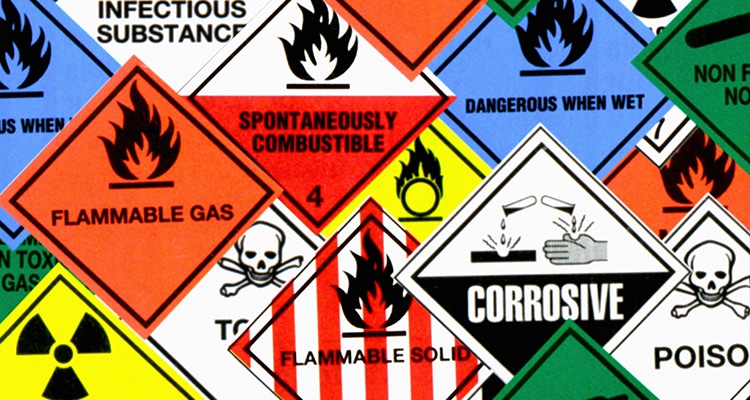This month, we are focusing on what you need to know about OSHA’s Hazard Communication Standard (HCS). OSHA’s goal, in general, is to protect workers’ rights, but the HCS extends this mission by ensuring workers also have all the knowledge they need to protect themselves from chemical hazards in their workplace.
To do this, HCS requires chemical manufacturers and importers to assess the chemicals they produce or use for hazards. Then, these companies must use this information to create labels and safety data sheets (SDS) for the exposed workers. This also helps provide customers with hazard information. Additionally, the HCS requires that companies provide the appropriate training for potentially exposed employees.
Creating SDSs is key to compliance with the Hazard Communication Standard. An SDS must include information in 16 specific sections, including identification information for the chemical (Section 1), hazard warnings (Section 2), ingredient/composition information (Section 3), and potential measures for first aid (Section 4). Sections 5 through 8 must provide more information about safe handling and emergency information regarding the chemical. These sections should be written in a way that is easily accessible if the information is needed in an emergency.
Sections 9, 10, 11, and 16 should provide more in-depth and technical information, including chemical properties and information about the document itself (such as its last revision date). Lastly, Sections 12 through 15 differ slightly from the rest of the document, as they must be consistent with the UN’s Globally Harmonized System of Classification and Labeling of Chemicals (GHS). Check out OSHA’s SDS “Quick Card” or more in-depth instructions for a complete list of section requirements.
Once created, the SDSs must be easily accessible to all workers whose workplaces store or use hazardous chemicals. They may be kept as hard copies in a binder or on a computer as long as the file is easy for all workers to access and still accessible in the case of a power outage. OSHA requires employers to keep employee medical and exposure records for the duration of their employment plus 30 years. In the event of a chemical exposure, an SDS is a useful source of information, so those should be kept for the duration of employment plus 30 years. It’s easiest to keep them into perpetuity.
Another important step in conforming to the HCS requires companies to create specific labels, which include pictograms, product identifiers, and supplier information. These labels also include precautionary statements (emergency and first aid instructions), directions for use, and hazard statements. Standardizing labels in this manner helps advance the HCS’ goal of making hazardous chemical information easily accessible for all workers who need it.
These steps, while important, can be overwhelming if your facility uses and stores many hazardous chemicals. Luckily, Chemical Safety Software’s OSHA-compliant SDS management system is perfect for this task. It will create an easy-to-use online SDS binder that allows you to quickly add and revise your data sheets, cross-reference them against CSS’ reference database, and print GHS-compliant labels directly from your account (without requiring you to import the data). The system will also allow you to store unlimited safety data sheets and back up your SDS binder for offline use.
Making use of this system helps your company maintain compliance with OSHA’s Hazard Communication Standard, saves you time and stress, and ensures your employees have access to the hazardous chemical information they need. Up for next month: OSHA hazardous chemical inventory requirements.



